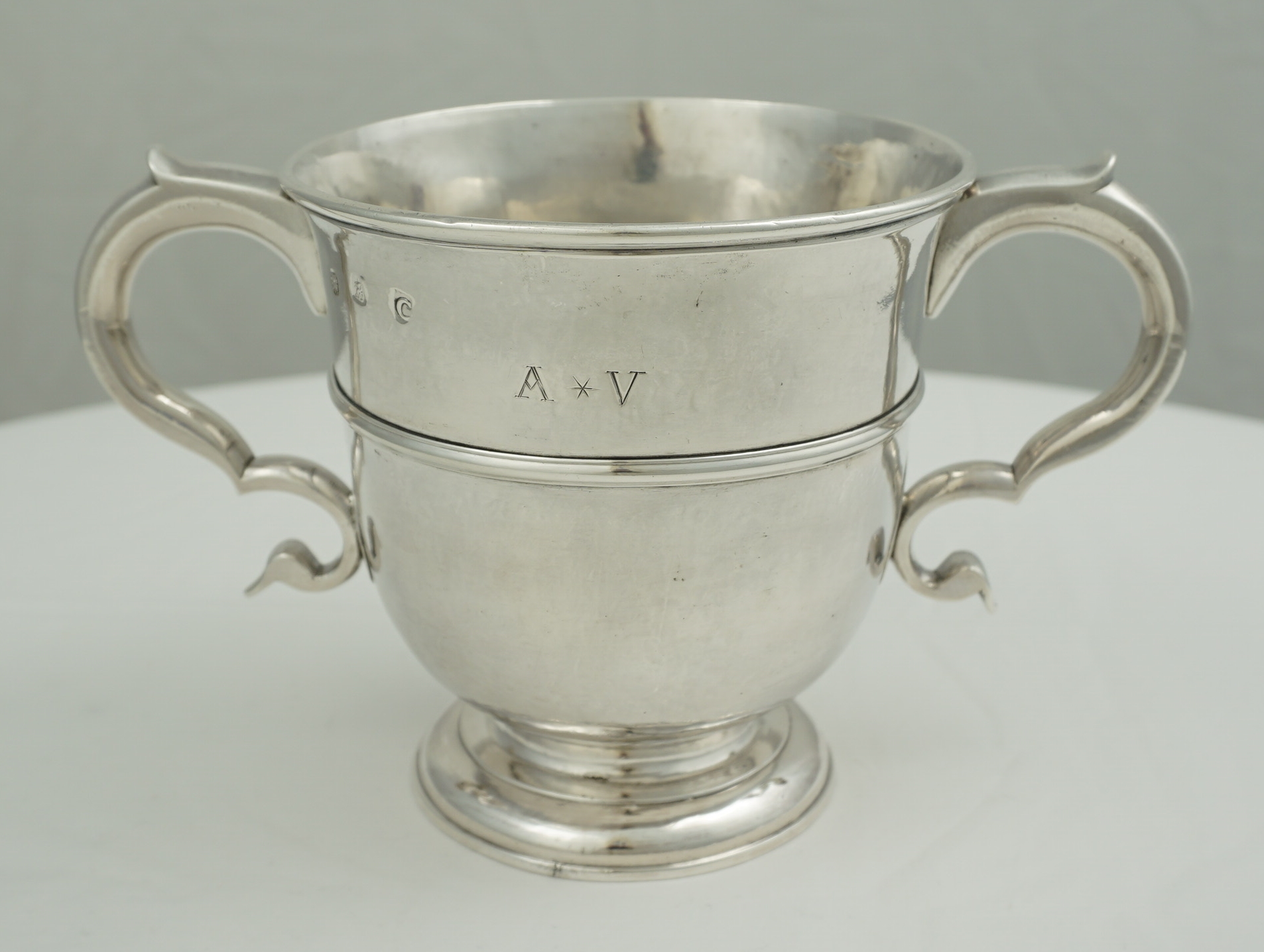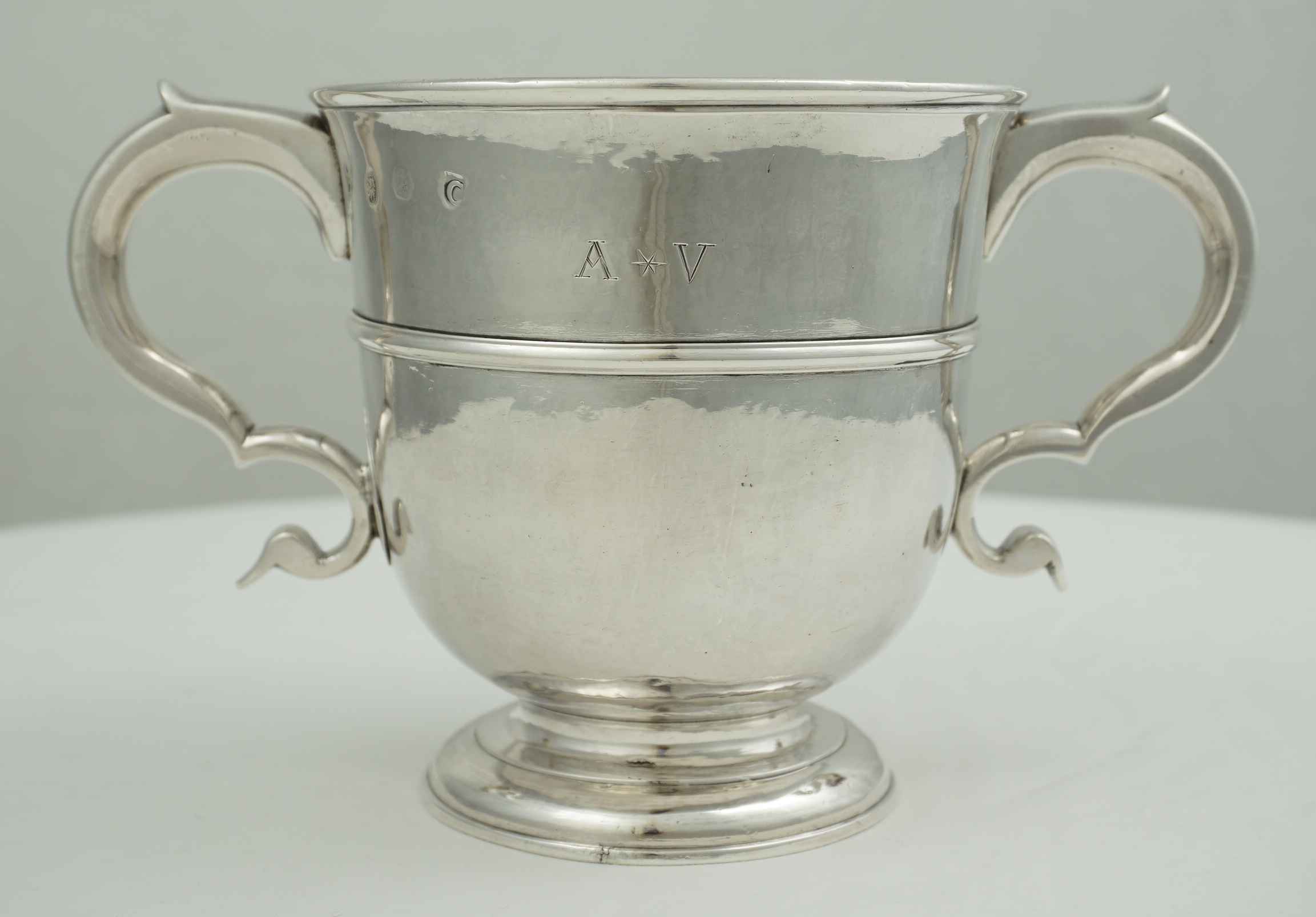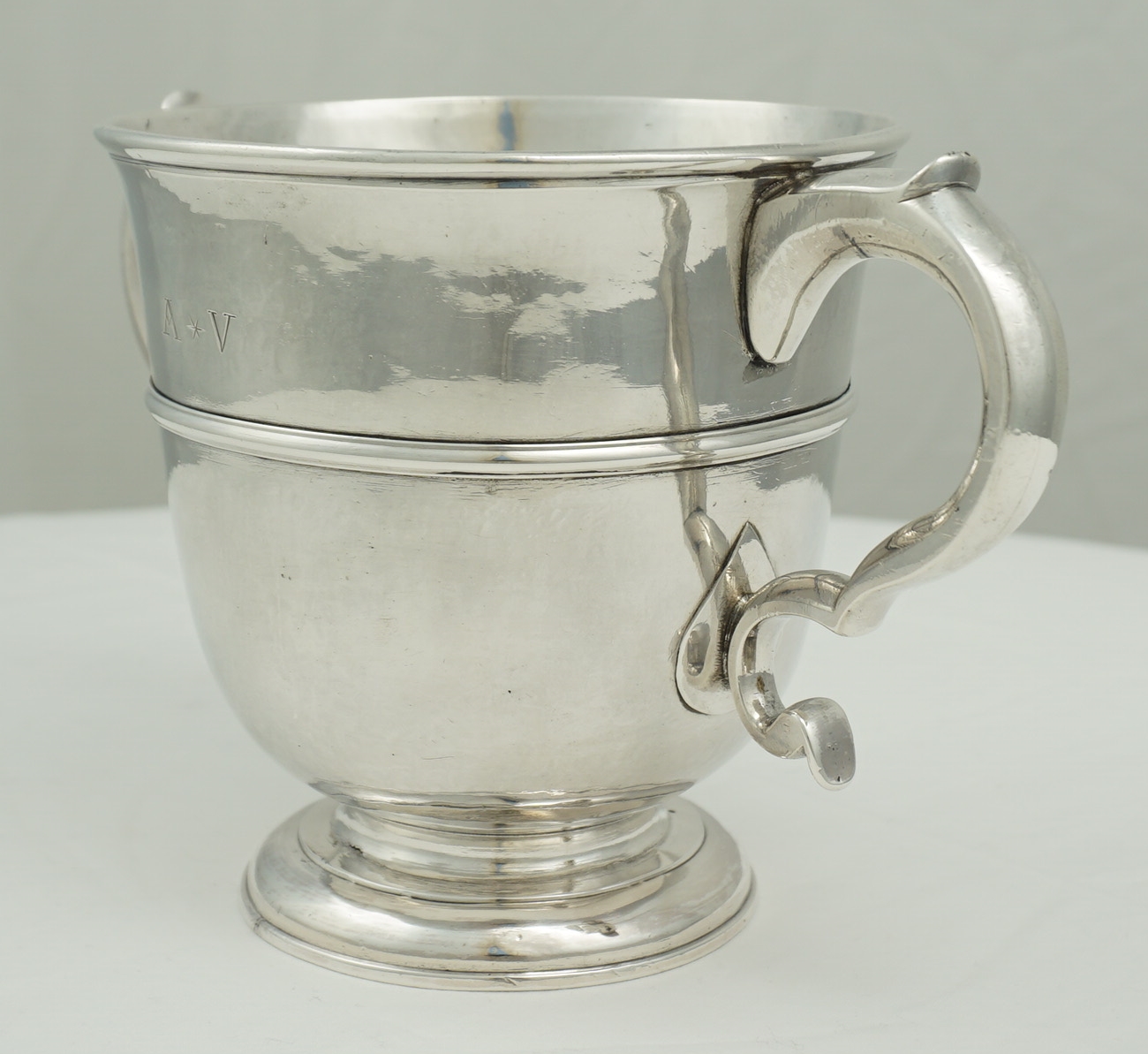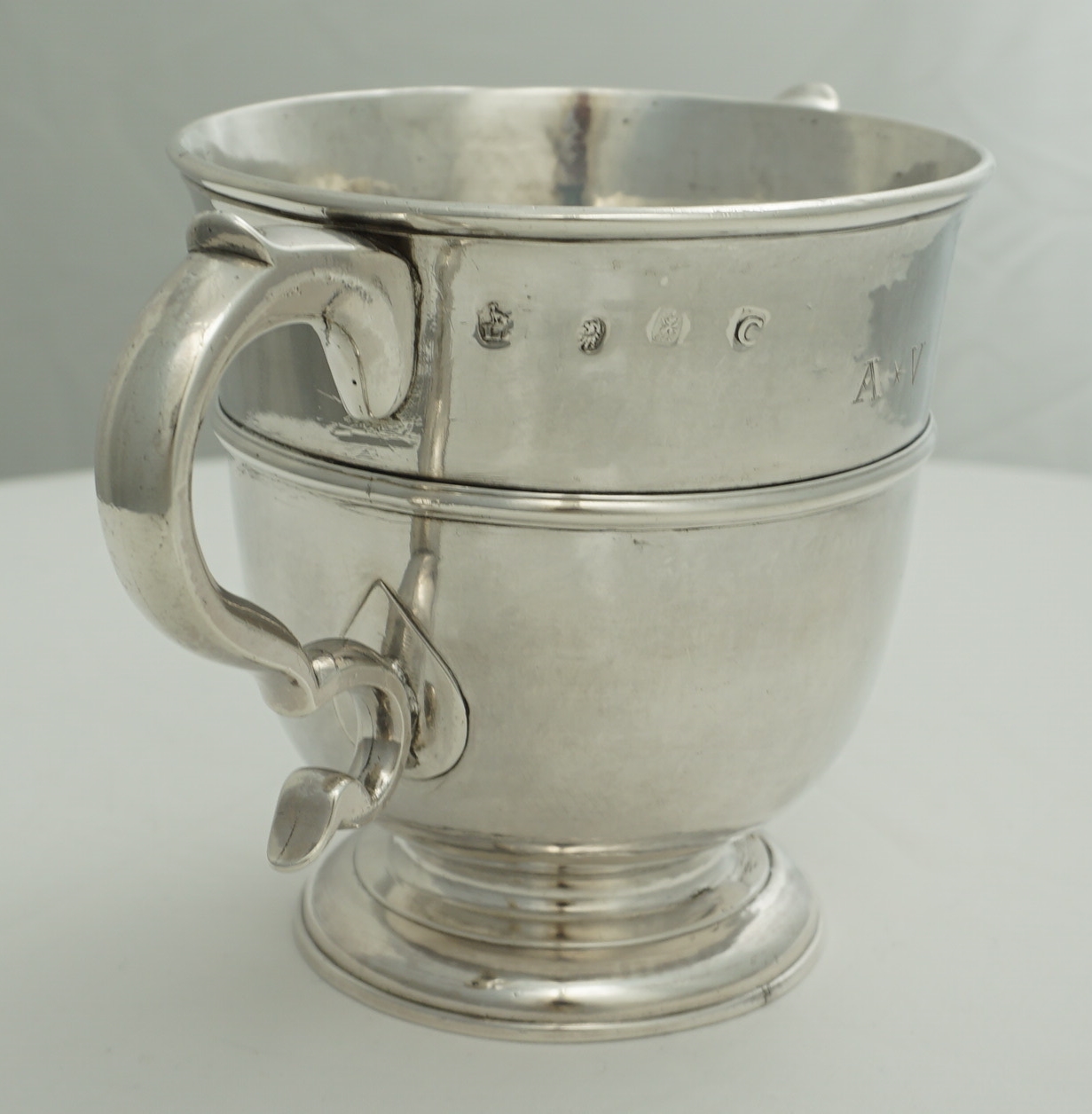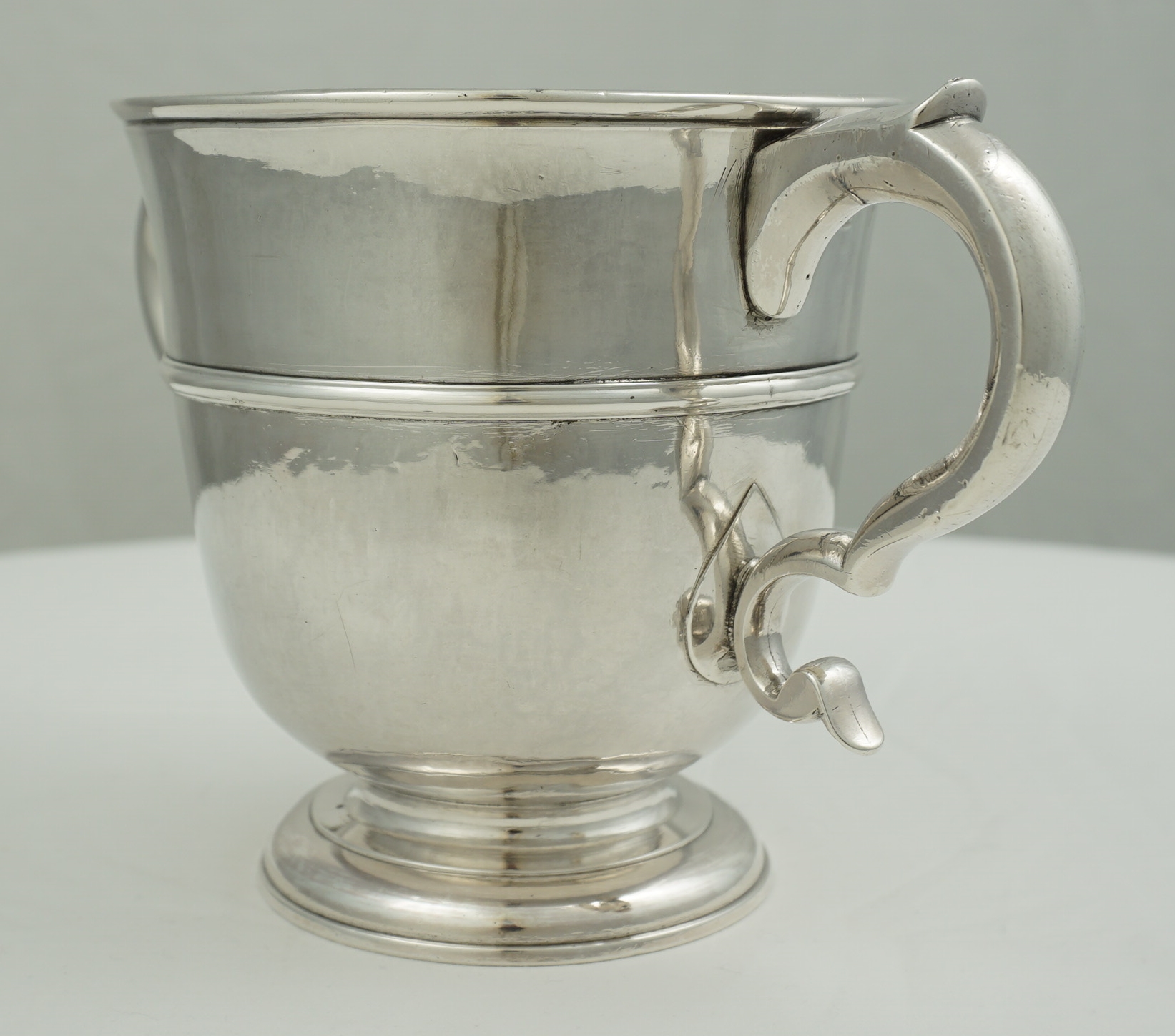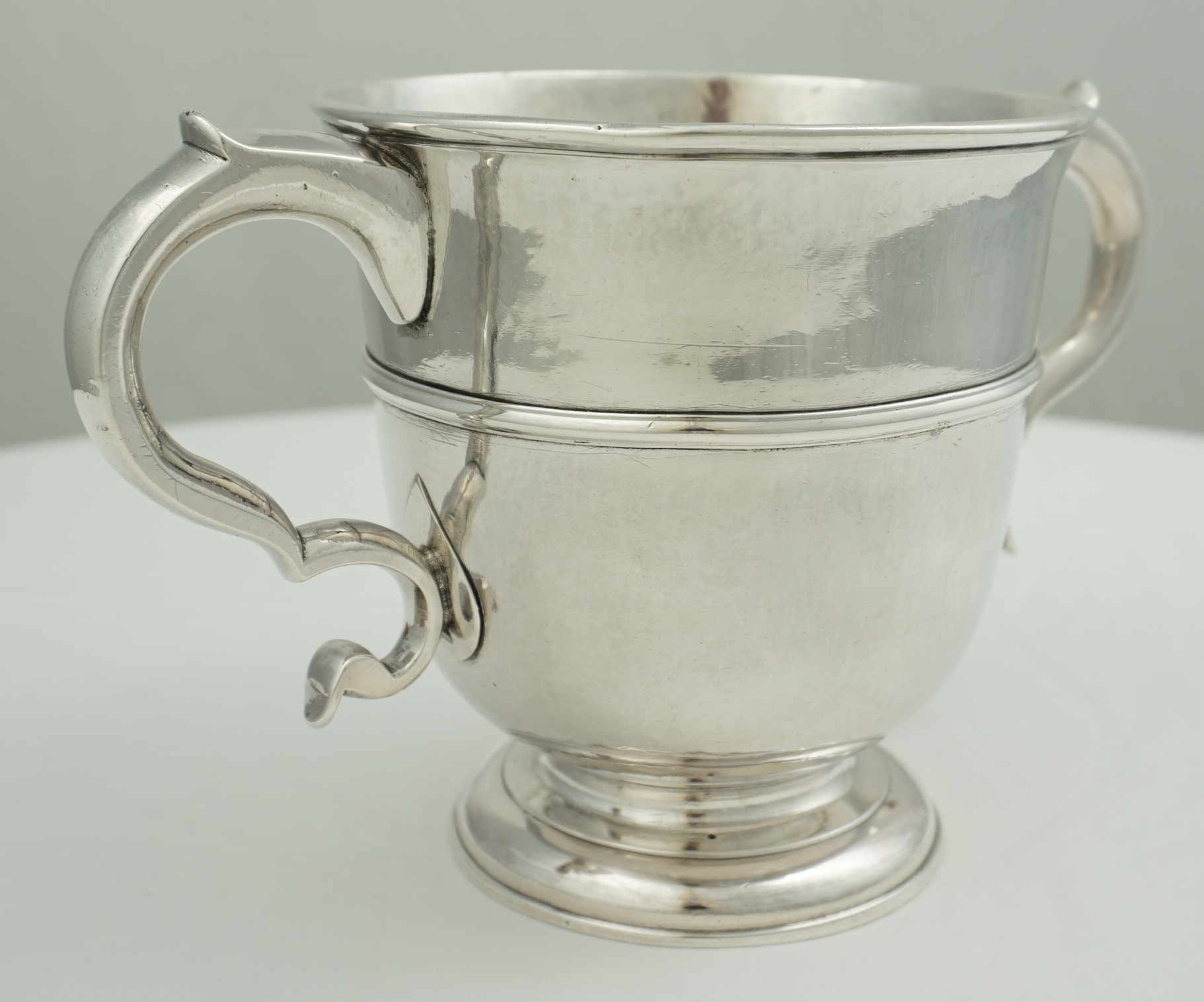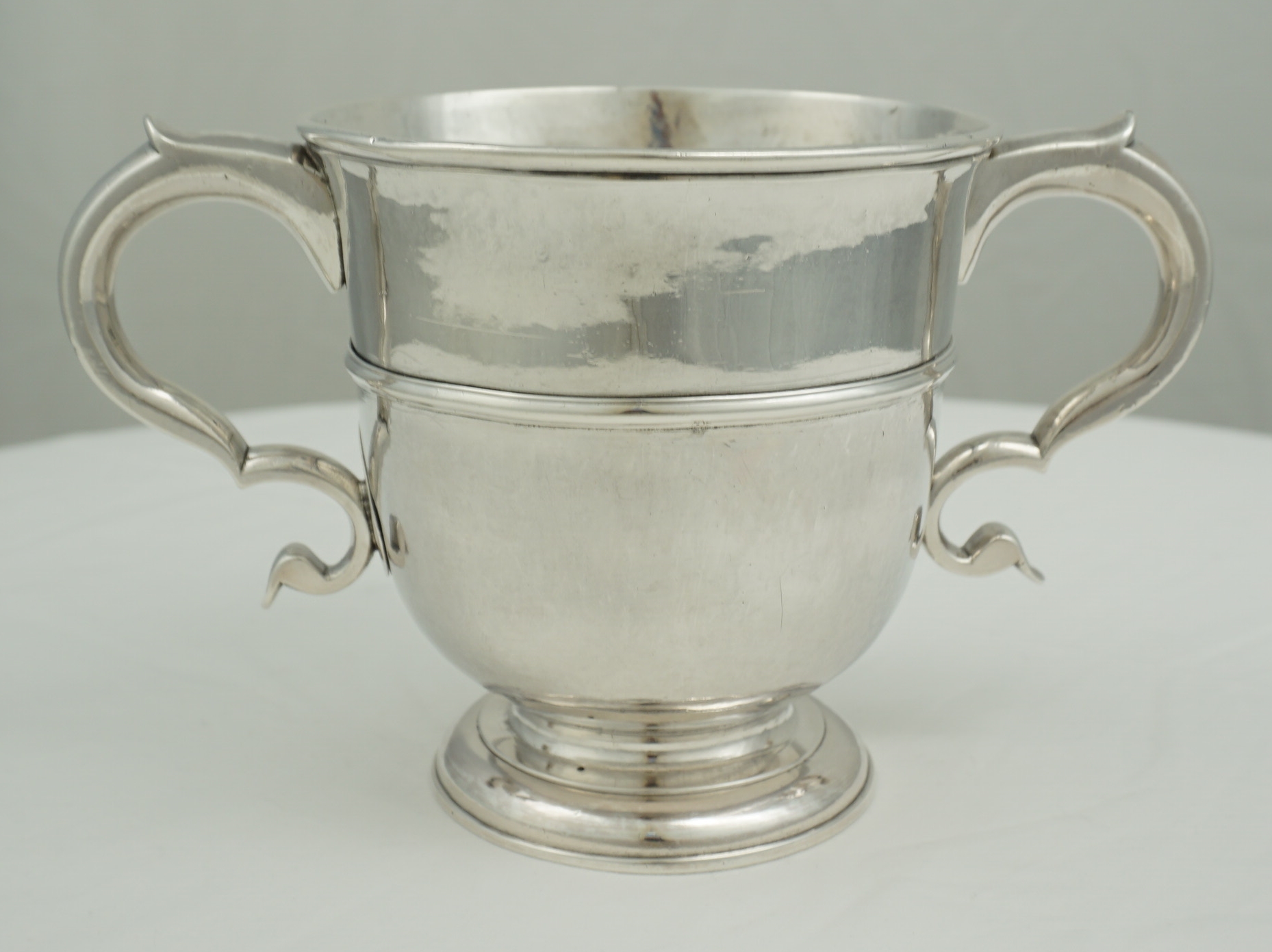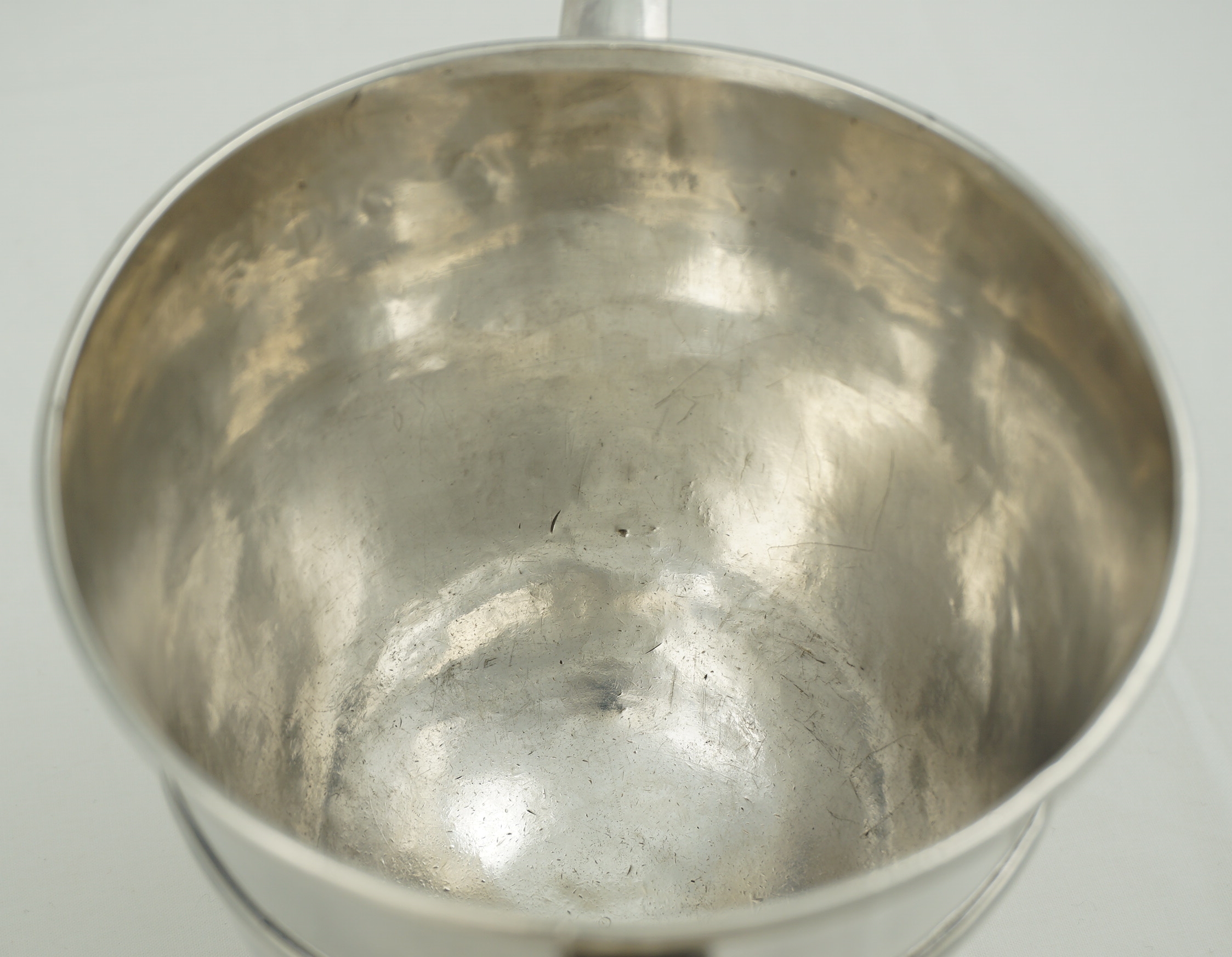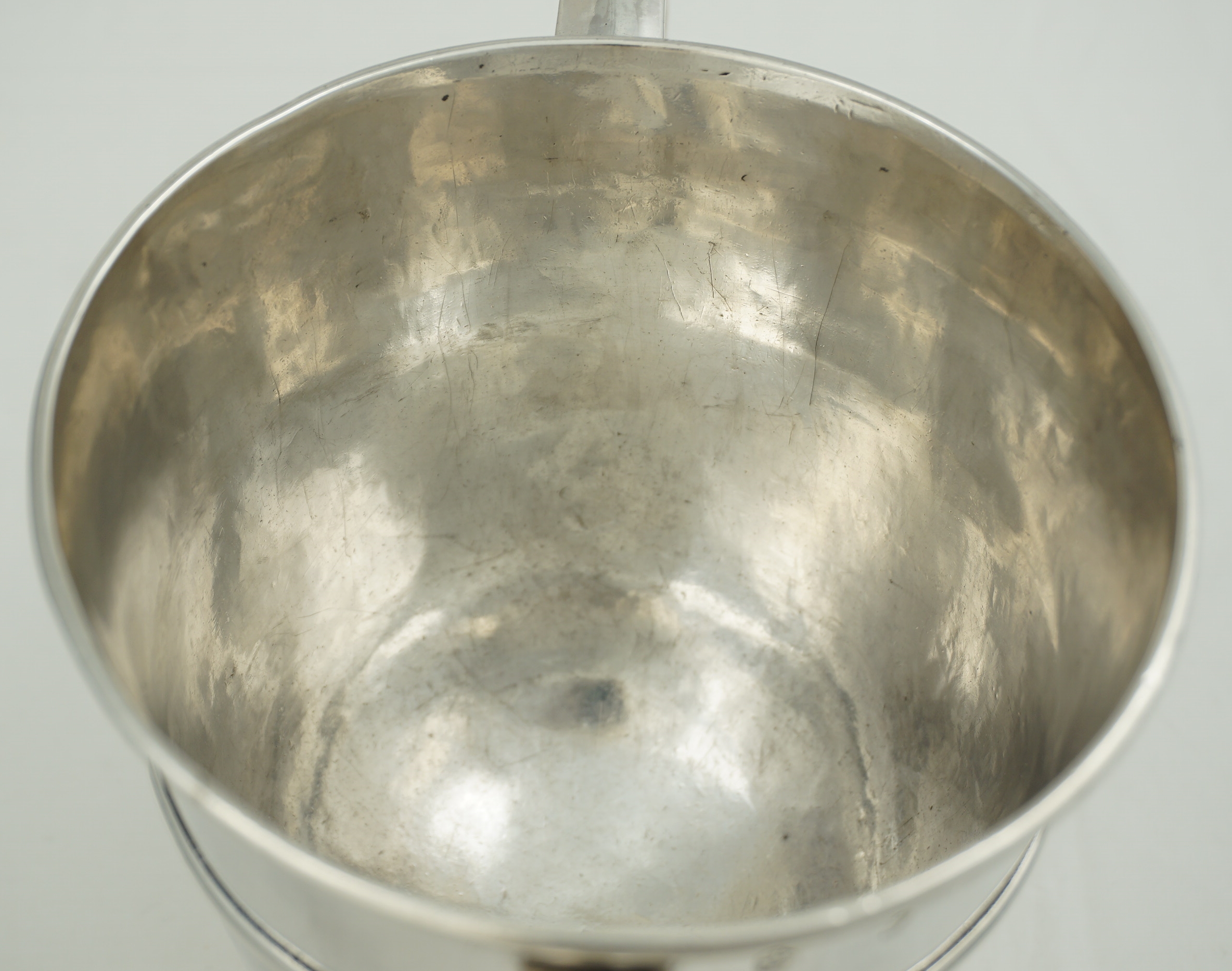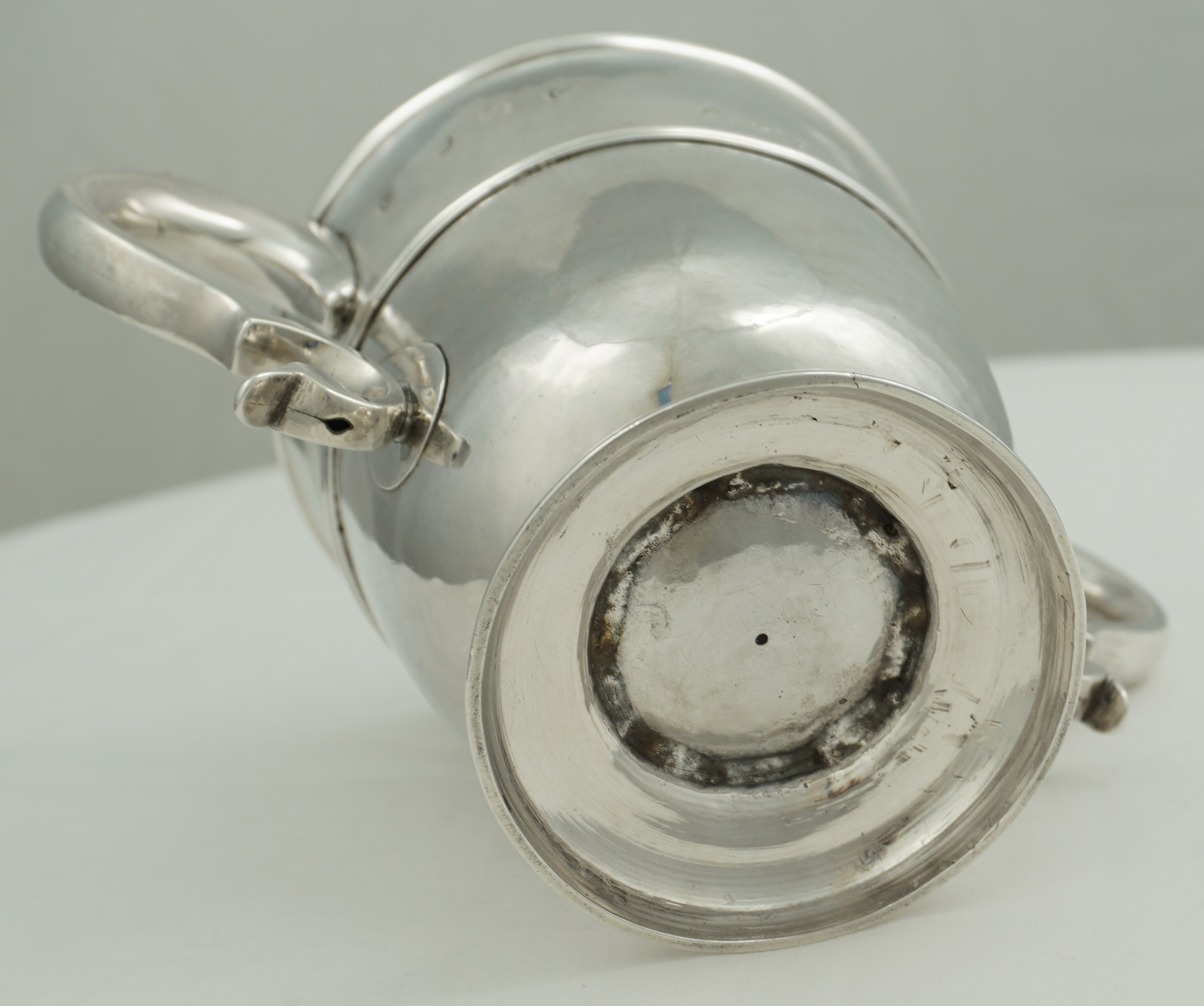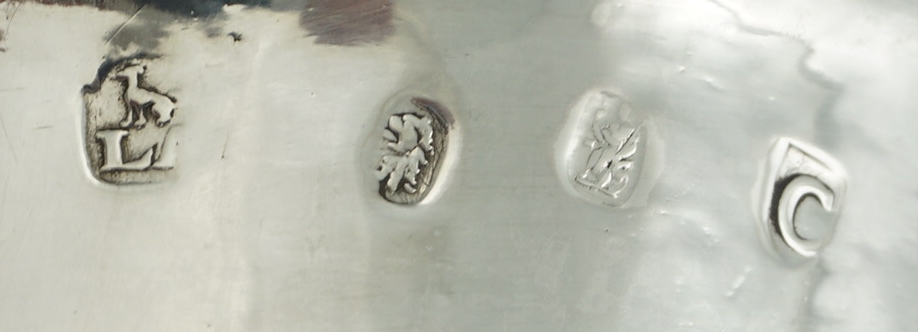| INDEX | ALL SILVER |
| DESCRIPTION | Very good antique English George I solid Britannia standard silver two-handled cup. These items are also known today as
caudle cups, posset pots and porringers. Which term you use will likely depend upon where you live and each is equally incorrect (historically) although for different reasons. The Victorian and Albert museum
simply call their example of 1705 by John Sutton, 'cup' and I think this approach has merit. The earliest extant examples are from the 1650s but
16th century inventories exist in which examples are described as 'cups with ears' and in 1595 in the plate book of Brasenose College, Oxford 'towe silver potts wt eares'.
This pleases me. This large and very heavy example is in the restrained, rather plain form of domestic silver popular throughout the reign of Queen Anne that had ended only four years earlier. Simple ring turned foot and an almost straight sided body just flaring outwards towards the top with simple thread decorated applied central girdle. The stylised flying leaf capped scrolling handles are interesting for both retaining their lower duck's bill terminals that are so often broken off and lost and for being cast, the vertical solder seam most visible beneath the lowest scrolls around the vent holes. Without these holes the gasses trapped internally would expand and explode the handles when heat was applied to solder them to the body. Very simple initial engraving A*V to the upper front panel and no evidence of any other engraving or erasure. The hallmarks are exceptionally good and clear for silver of this period. Most likely would have been matched with one of the new 'salvers' of the period, a low, flat circular plate raised on a broad ring foot, the idea was for the salver to catch the drips of beer or whatever and save your fine carpets. If you have considered for even the briefest moment that this piece would make a lovely presentation trophy suitable for a modern engraving then you must leave now and hang your head in shame for the rest of the week. |
| SILVERSMITH | Thomas Langford I, mark also noted on a "porringer, com. cup" of 1719. Mark is LA, the first two letters of the surname which is the correct form on Britannia
standard silver as written in Statute 8, William III, c.8 of 1696 and was enforced from 27th March 1697 until the restoration of sterling standard 1st June 1720.
Langford was apprenticed to Henry Beasley 1707-15 whose mark is noted on a com. flagon of 1714. Henry was apprenticed to Ed. Gladwin 1682-91. Thomas Langford later took as an apprentice a Thomas Gladwin. |
| DATE or HALLMARK | 1718 |
| ASSAY OFFICE | London |
| WEIGHT in GRAMS | 486, this is exceptionally heavy for a piece this size, difficult for me to express how thick the metal is but I shall try. If I hold the body in my hand and squeeze until it hurts I cannot produce any flex in the metal. |
| WIDTH inc. handles | 8", 202mm Height of body 4 ¾", 121mm |
| SILVER STANDARD | ·9584 Britannia |
| CONDITION | excellent, clean but not polished, looks just as old silver should. Both lower handle joints have pushed into the body in the distant past and the areas strengthened by the addition of the teardrop form plates. Small amount of grey solder at the bottom of each upper handle joint that does not go through and appears to be simply sitting on the external surface. This might be old lead and it would be worth considering removing this next time the handles are off but for now it causes no concern. |
select any image to enlarge
| SOLD |
| Price £888 |
| item number m8892 |
| Available Silver Two-handled Cups |
| email questions to silfren@btinternet.com
telephone 07563 011924 experts available 24 hours every day |
